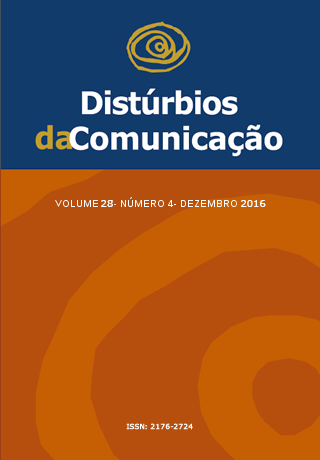Stomatognathic system characteristics in systemic sclerosis: a case report
Keywords:
Speech, Language and Hearing Sciences, Reumatology, Clinical diagnosis, Chewing.Abstract
Systemic sclerosis is a rare disease of unknown etiology and pathogenesis, characterized by an autoimmune process. It often affects the stomatognathic system. Objective: To compare clinical and electromyographic evaluation of a subject with systemic sclerosis (S1) and one without rheumatic disease (S2). Methods: Clinical, descriptive exploratory study consisted of two female subjects with 26 years old. The clinical evaluation was performed in the Orofacial Motricity and Physiology Laboratory of the Federal University of Sergipe. We partially used the MBGR protocol. The recording of the electrical activity in the hemifaces by surface electromyography, focusing on chewing, was performed at rest and at maximum intercuspation. Results: The clinical evaluation showed restraint in the subject’s mouth opening with S1 rheumatic disease (24,5mm) compared to 49,0mm in S2. It was observed a normal posture of parted lips, bony palate with increased depth, reduced width and dental absence. Change in mobility and tone of the speech organs. The masticatory pattern was unilateral, with decreased speed and atypical contraction of the mentual. Swallowing with sharp contraction of the mentual and the presence of residue after swallowing in S1. These changes were not observed in S2. Regarding the electromyographic register, S1 showed a higher electrical activity to accomplish chewing when compared to S2. Conclusion: Significant alterations in the clinical evaluation and electric chewing activity related to the stomatognathic system in the subject with systemic sclerosisDownloads
Metrics
Downloads
Published
Issue
Section
License
Copyright (c) 2017 Sílvia Elaine Zuim de Moraes Baldrighi, Anny Karoline Andrade Silva, Luiz Barros Filho, Leylane Fonseca Almeida, José Caetano Macieira, Gerlane Karla Bezerra Oliveira Nascimento, Carla Patrícia Hernandez Alves Ribeiro César

This work is licensed under a Creative Commons Attribution 4.0 International License.









